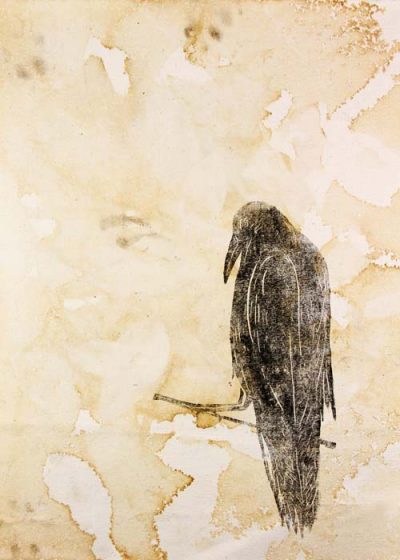
I woke up today and made a cup of tea. It’s a little after 4:30 AM when I do this. It’s dark outside, but I look anyway. In another couple of months the sun will be shining through my kitchen window, even at 4 AM. Then, in another couple of months, the sun will have been up all night.
This morning, after I stared out of the window and after I made tea, I took a seat in the re-covered wingback chair in my living room. The living room joins the dining room, which amounts to two antique Bergere chairs, a pecan wood credenza, my grandmother’s 100 year old dining table, and two bookcases. One of the bookcases holds the poetry. The other bookcase holds a few of the art books and a modest collection of Easton Press editions. There are old editions of Turgenev, Henry Van Dyck, Richard Jeffers, and a 1961 four volume set of early writings from The Spectator. The wingback is centered between a moulding panel that divides the living room from the dining room. The panel is 10.75“ wide. I know this because I measured it. I measured it because I was curious. It’s important never to do anything out of boredom. Boredom is the domain of dull children or the near dead.
I reside more or less in the chair for an hour. I’m restless though. I’m prone to standing up and walking around in tight circles. The house is 900 square feet, so the circles really are tight. Plus, I have crammed the house like a Victorian game room, like a 900 square foot singular cabinet of curiosities. While making circles, I often talk to myself. I don’t talk too loudly, not wanting to wake the family. I talk through play scenes, movie scenes, possible poems, and essays I want to write. I carry on entire conversations. I say everything I have to say, and sometimes I say everything I wish to say. I try to be clear. I try to listen. I try to understand. After I’ve had my imaginary say and listened for someone’s imaginary response, I sit down again. It’s not even 6:00 AM, and I am wiped out.
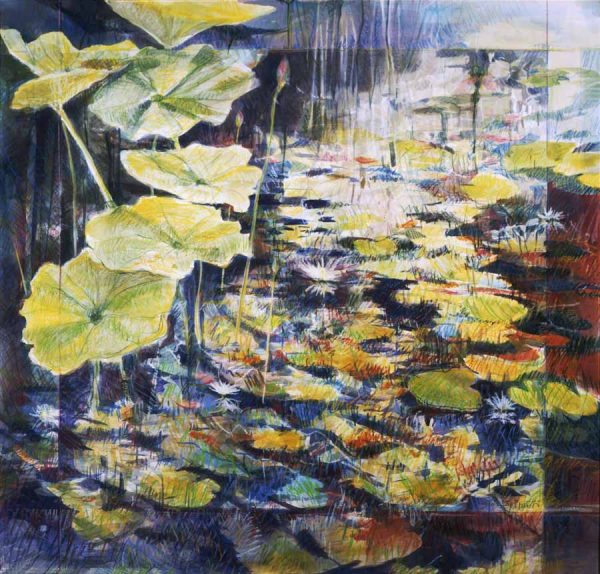
I read during these early hours, as well. I don’t read with particular concentration most mornings. Sometimes I read a favorite paragraph or a sentence or two. Sometimes I flip through art books and read the captions. Sometimes I stare at the paintings on the walls. Paintings are a good reason to get up from the chair. Combining the living room and dining room, there are 12 pictures on the walls. I don’t have a favorite among them. I love them all. There are two watercolour paintings of slot canyons by Scott Geary, a block print on rice paper of a raven by Rebekah Wilkins-Pepiton, several original watercolors and an acrylic piece by my late friend and artist Frank Gerrietts, and a watercolour enhanced with silverpoint of an apple painted by Laura Jackson. Although I will get up from the chair and stand close to these paintings, I like that fact that I can see them from the chair. I realise how they give another life to the walls.
***
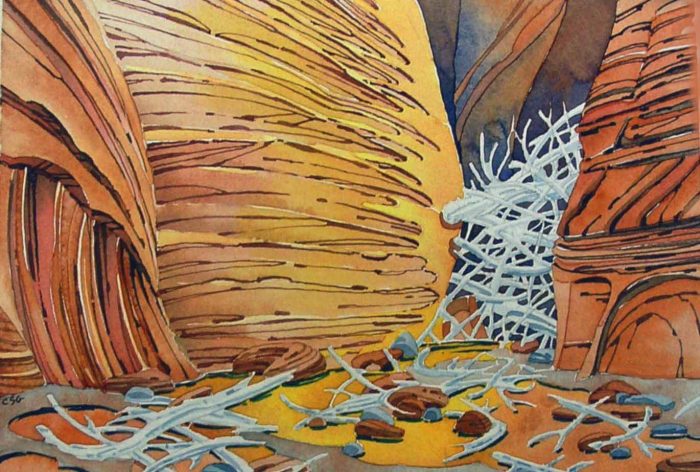
This is a typical morning, an everyday. The hours sometimes vary. The readings tend to vary. Coffee sometimes takes the place of tea. The conversation can change from day to day, and familial duty will call around 7:00 or thereabouts, but not this morning. Being in this space of reading and looking passed hours ago. Now the sun is up and shines brightly on the sea. And I try to see what is here. Often enough, I see what is not here.
What is here, what anyone can see, is the sun coming through my front windows. Today the sun arrives with perceptible energy. After a winter spent in darkness, the sun’s return is a wonder. I do not know the cult practices of the ancient herders who once roamed the island where I live, but I can well imagine these people sharpening their knives for a sacrifice after the sun has returned. It burns the tops of islands across the sea and touches the water in blinding magnificence. Easy, I think, perhaps even respectful, to walk outside and throw hands in the air and sing like a madman for the sun. This is not worship. This is jubilance. I am not a person bothered by months of darkness. I rather enjoy months of darkness. But the sun is also a gift. I say thank you with nonsensical shouts of joy and sometimes songs. Why not?
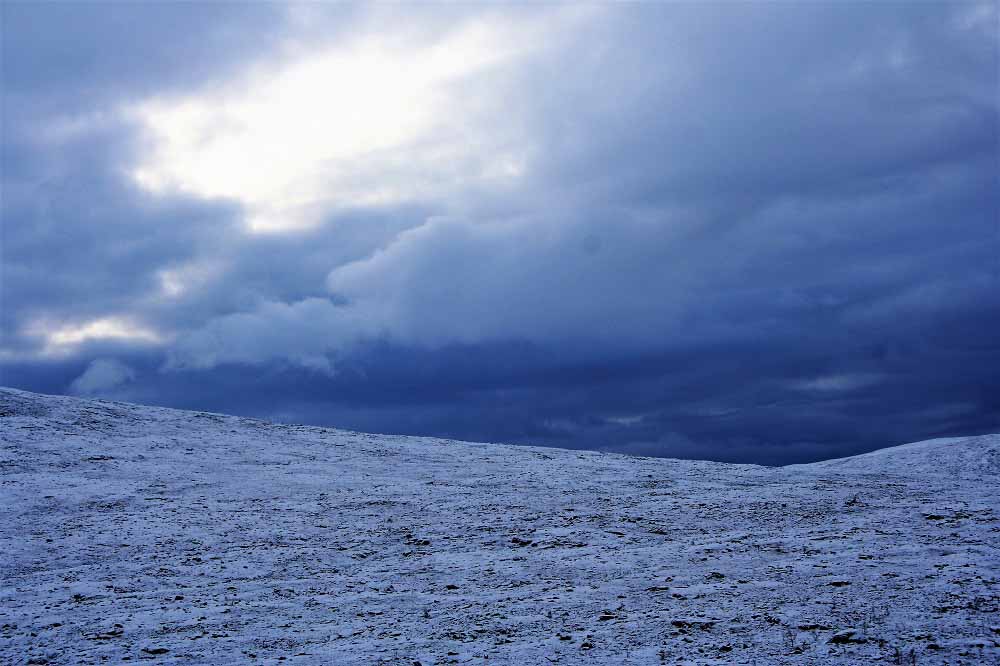
I believe it was three years ago in May—The Lusty Month of May!—when I took a shower with the shade up and the window wide open. The sun poured into the bathroom. Outside the snow at last had melted and there were hints of green in the yard. I finished my shower and walked outside as naked as I had come into the world. The sun rained down glorious and warm, warming all the earth it seemed and, not to be forgotten, my bare ass. As I stood on the porch, I howled at the top of my lungs the John Denver song “Welcome to My Morning.” And, as I stood there howling with my arms in the air, the sun rapturous on my everything, an entire tour group of cyclists came whizzing down the road and very, very close to my house, which is very, very close to the road. How I wish I could say that I stood there proudly in full voice and body, but I did not. Alas, I yelled VELKOMMEN TIL NORGE! and dashed back inside the house. Not quite the triumph of REMEMBER THE ALAMO!, true to my Texas roots, but memorable, nonetheless.
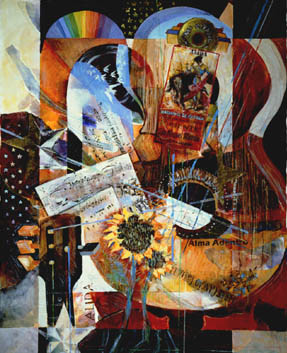
In this season when the sun returns, our eyes begin to open. The “our,” in this case, are all of us who live here in the far north. I don’t know if this is factual, but I’ve been told that natives where I live have larger than average pupils. The reason for this is because of the dark time. All of our pupils enlarge when there is relative light, but here, where there are days and days of darkness, an apparent adaptation has evolved in which locals tend to have larger than average pupils. In other words, because natives have spent generations in the dark, their eyes can pull in whatever light there is, even in the dark time. Maybe this is true. It’s a good story even if it’s not a fact. I do know when the sun first returns all our eyes are open. The places we have known throughout the dark months appear almost new to us. Everything we see is sharpened into new angles and shadows cast by a new sun. The sea sparkles. The snow glistens. The sky and clouds stage repeated dramas of light and grey.
These things—the light, the sea, the mountains, the angles, the shadows, the utter brilliance of them all—we see.
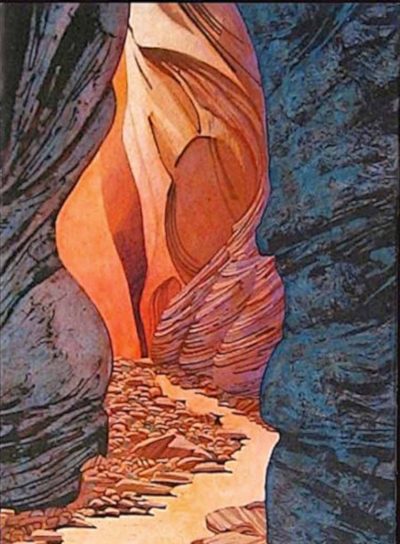
The things we see that are not present in our shared reality are in some measure unique to each of us. What does this mean? The answer is, nothing fancy. If someone were to show me a toy they had saved from their childhood, say a diecast biplane, the person showing me the toy would summon different memories from me, even though both of us would be looking at the same biplane. The person showing me the plane may see the individual who gifted him the plane, may see where he played with the plane, may see again those places he had imagined flying the plane as a child. I would hold another set of associations. I may conjure a make-believe flight with Beryl Markham over the Serengeti. I may see the diecast tractor that a family in England gave my son, years ago. I may see the person before me more than I see the plane itself. The plane is there, of course. We can agree on this. But then so are an uncountable number of associations we hold in our reservoirs of memory.
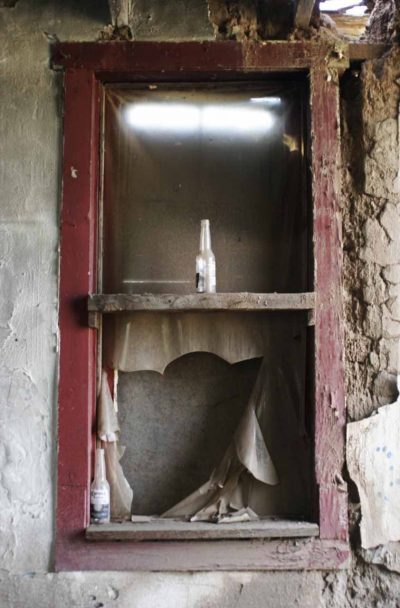
Paintings are somewhat different. They invite us to look. In this way, they are like landscapes. We must stop a little longer to see them. Unsurprisingly, I have framed the paintings in my house. A frame protects a painting. A frame also focuses a painting. Notice how often we seek frames in nature. We look through arches, for instance. We look as far down a river as we can and frame the place where the water leaves our view. We look ahead into canyons. We try to see where a canyon wall meets the ground, where it stops, where it opens. I do the same with the slot canyon paintings of Scott Geary. I stand close to them to see where the canyon bends. Then I try to see a little further around the bend. We drive in our vehicles and stare out of our windows, framing some moment or some place as we or they pass. Picture a woman who leans back in her seat but turns her head to glimpse some mark of abandonment—the leaning silo, the house nearly covered with bramble, the field that holds only a single strand of fence, the dilapidated house where torn curtains have blown through a shattered window.
Or here, in my small house, where I can look at Laura Jackson’s perfect green apple, as it drifts through swirls of impossible blues. Or I can look through my window and see the sea and sunlight and the boathouse at the bottom of the hill. I look again. There are more things in this view, more people and more love in this view than I will ever write about.
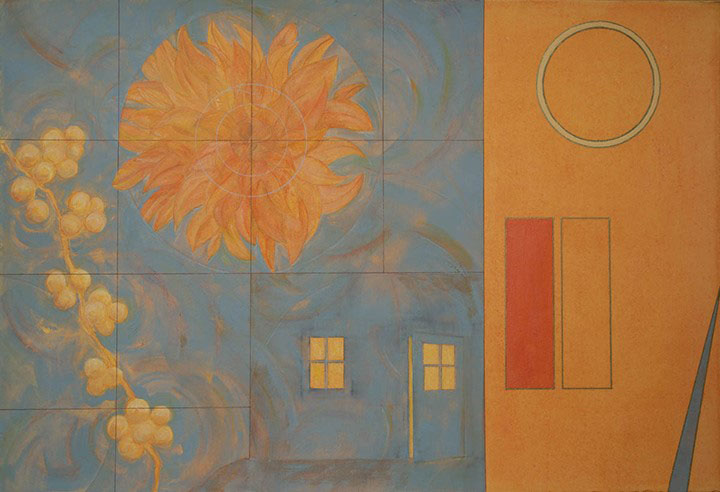
All these words. “Words, words, words!,” as Alexander says in the Tarkovsky film The Sacrifice. A couple of years ago I sent an essay to a Norwegian publication calling for essays with an environmental lean. I wrote about the old boathouses and red barns where I live. I explained that many of the boathouses have lasted for generations, and as such, they are part of the environment. I pointed out how the English architect John Vanbrugh (1664-1726) argued that ruins might remind us of how beautiful some landscapes are and indeed, might make those landscapes even more beautiful. Yet my perceptions about red barns and boathouses were declared too much of a Romanticized view. I questioned this. Did they want a so-called “greener” view? Should I have indicated how much more energy efficient our plain ugly architecture is these days? Should I have mentioned how we must persist in antagonising those who resist change? I’m not entirely sure, but there were hints. There was also the expressed desire that I might send more writing, any writing, immediately. That didn’t happen.
***
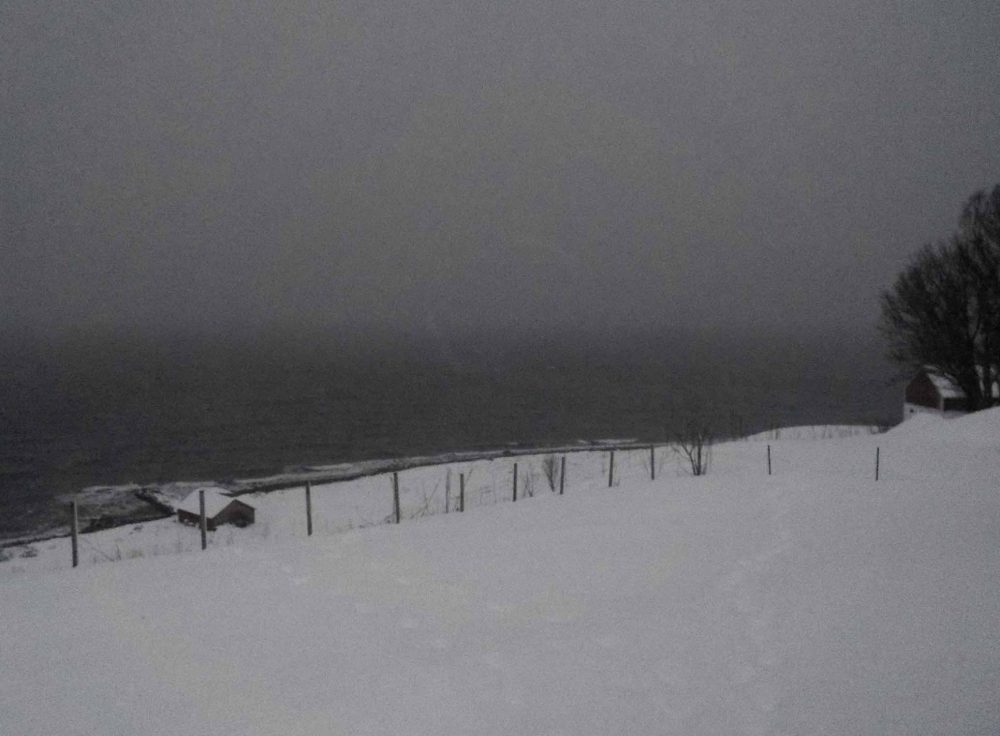
Outside, the sun has moved further in the west, and the sky softens towards an evening light. The boathouse has lost all the snow from its roof, and the currant bushes look healthy. They grow against the backside of the boathouse, the side that faces away from the sea, and at this point a few of the branches maybe grow inside the naust, too.
And it’s almost coffee hour at my house—16.00. I’ll use the Mad Hatter cup that my friend Helen Middleton gave me a couple of years ago. I think about that. The Mad Hatter is, well, mad. I wonder if Helen was saying something. My appearance is nothing like the Mad Hatter. Really, I look more like the Mad Rabbit. Then again, maybe the matter isn’t one so much of looks. Oh, well. It’s coffee hour. I will go to the cupboard and take down the cup. I will fill the coffee pot with four cups of cold water. I will pour water from the pot into the maker, in which I have a filter loaded with two healthy scoops of coffee. I purchased the coffee from the grocery store a couple days ago, and it tastes fresh. The house is a little chilly, but the sun is back. All the light and wonder to come.
Damon Falke is a regular contributor to the Canyon Country Zephyr. He is the author of Now at the Certain Hour, By Way of Passing, and most recently The Scent of a Thousand Rains and the forthcoming film Koppmoll (2020), which explores memories of War World II and home. You can find out more about his work at: damonfalke.com, shechempress.org and on Facebook.
To comment, scroll to the bottom of the page.
Zephyr Policy: REAL NAMES ONLY on Comments!
Don’t forget the Zephyr ads! All links are hot!

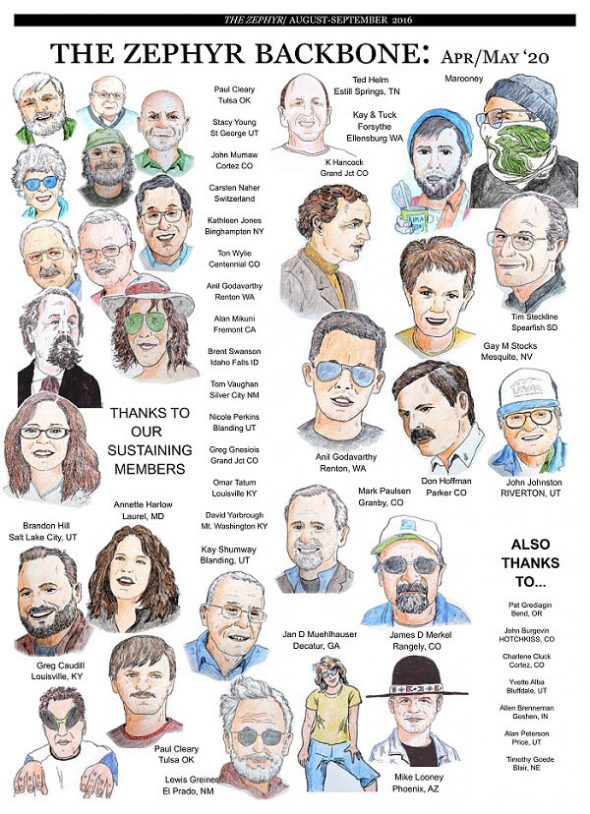

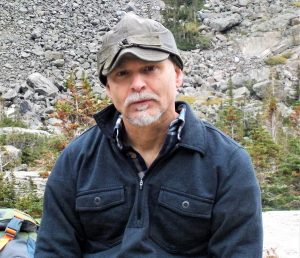

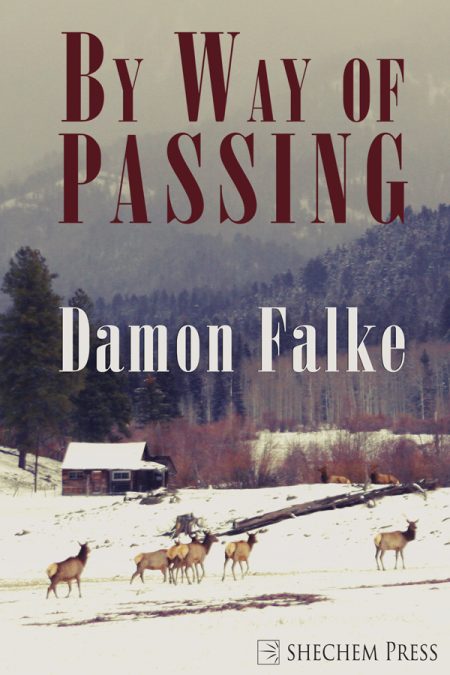

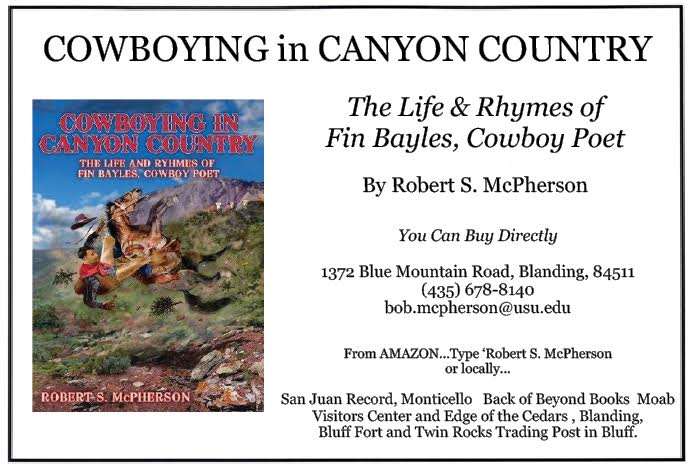


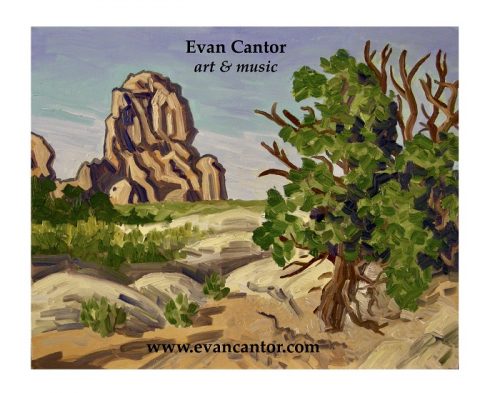

An Everyday Life sounds as if it’s in Alaska. having had an old friend who tried to lure my husband into going with him when he went, before Alaska was a state, we visited often. He became a millionaire, selling iceboxes to Eskimos as it were (he began a refrigeration business). A wondeful, late character!